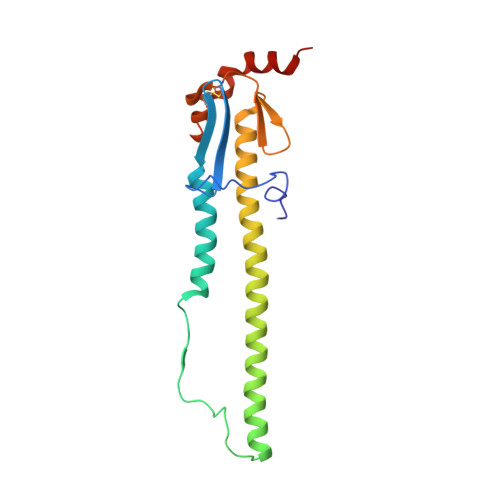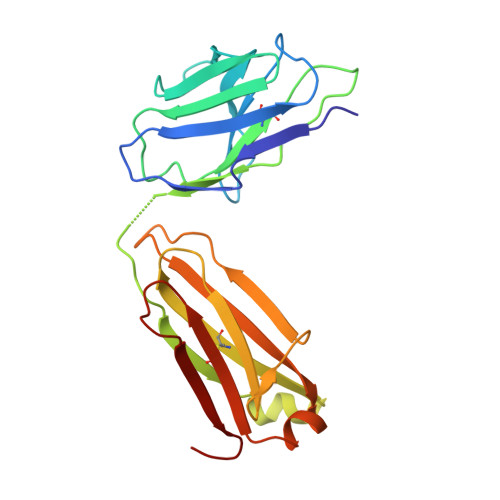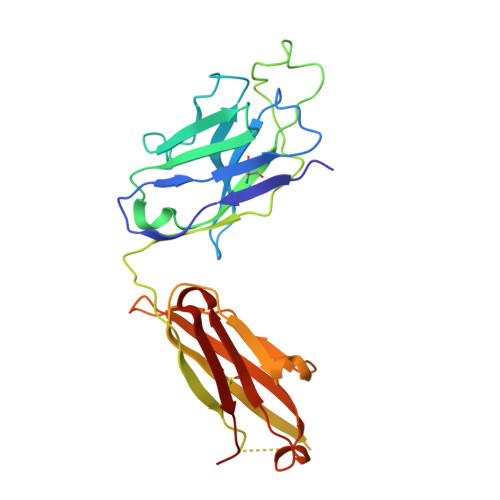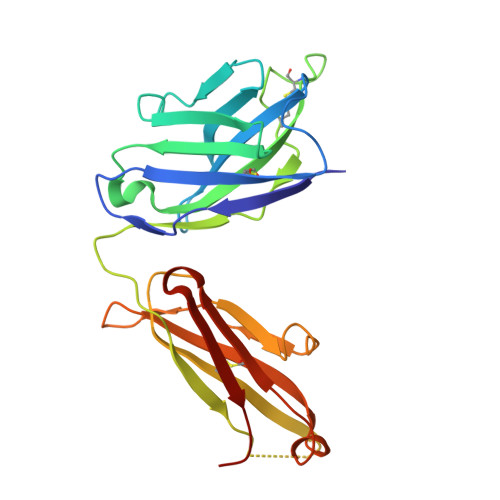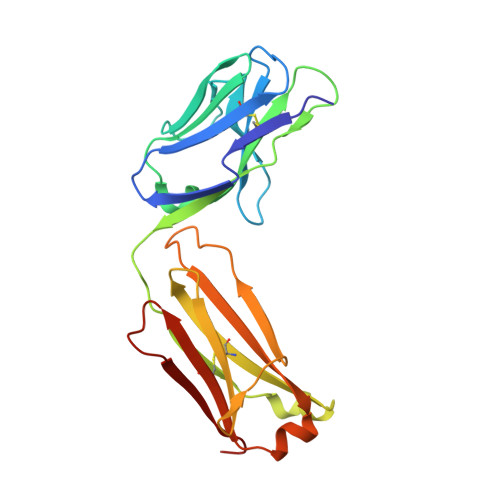Influenza chimeric hemagglutinin structures in complex with broadly protective antibodies to the stem and trimer interface.
Zhu, X., Han, J., Sun, W., Puente-Massaguer, E., Yu, W., Palese, P., Krammer, F., Ward, A.B., Wilson, I.A.(2022) Proc Natl Acad Sci U S A 119: e2200821119-e2200821119
- PubMed: 35594401
- DOI: https://doi.org/10.1073/pnas.2200821119
- Primary Citation of Related Structures:
7U8J, 7U8L, 7U8M - PubMed Abstract:
Influenza virus hemagglutinin (HA) has been the primary target for influenza vaccine development. Broadly protective antibodies targeting conserved regions of the HA unlock the possibility of generating universal influenza immunity. Two group 2 influenza A chimeric HAs, cH4/3 and cH15/3, were previously designed to elicit antibodies to the conserved HA stem. Here, we show by X-ray crystallography and negative-stain electron microscopy that a broadly protective antistem antibody can stably bind to cH4/3 and cH15/3 HAs, thereby validating their potential as universal vaccine immunogens. Furthermore, flexibility was observed in the head domain of the chimeric HA structures, suggesting that antibodies could also potentially interact with the head interface epitope. Our structural and binding studies demonstrated that a broadly protective antihead trimeric interface antibody could indeed target the more open head domain of the cH15/3 HA trimer. Thus, in addition to inducing broadly protective antibodies against the conserved HA stem, chimeric HAs may also be able to elicit antibodies against the conserved trimer interface in the HA head domain, thereby increasing the vaccine efficacy.
Organizational Affiliation:
Department of Integrative Structural and Computational Biology, The Scripps Research Institute, La Jolla, CA 92037.











